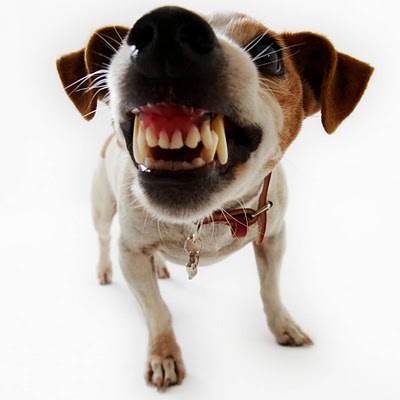Dog Behavior: Guide to Interpreting your Dog’s Body Language
Did you ever wonder what your dog is thinking or feeling at a given moment? There are many emotions that we as humans feel and dogs are no different. They can feel happy, fearful, excited, dominant, aggressive, you name it. Dogs use their bodies and facial expressions to communicate how they are feeling, although interpreting all of the signs are a bit difficult if you aren’t sure what to look for. The guide below will help you to better understand all of the signs that dogs use to display their emotions. Understanding their body language is a skill that will not only allow you to understand your own dog better but also allow you to safely, and confidently interact with other dogs you may encounter in your life time.

Confident Dog’s Body Language:
- Dog stands tall and erect
- Tail is held high
- Ears are either pricked up, or relaxed
- Tail wags gently from side to side, or if extremely happy may wag more forcefully or sometimes in a circular motion
Happy Dog’s Body Language:
- Ears held in a natural position
- Face looks relaxed and natural
- Eyes are normal size/ no changes
- Mouth closed, or slightly open, may pant, or corners of mouth might be turned upwards slightly as though he’s smiling
- Body stance is relaxed with weight equally balanced
Excited Dog’s Body Language:
- Stands upright and looks intense, body may look ready for action
- May act playful
- Ears are perked up
- Tail is held high, may or may not wag
- Eyes looking at source of excitement
- Mouth may be slightly open, or may make short excited barks
Fearful Dog’s Body Language:
- May lower body either hunching as if trying to appear smaller, or cowering on the ground
- Head held low
- Recoils away from person, or object that is causing the fear
- Tail held low, or tucked down between legs, or may wag in a quick, frantic manner
- Muscles are tense and rigid
- May yawn in an exaggerated way
- Looks away, or turns head away to look so that whites of eyes show (known as “whale eye”)
- Barking
- Mouth closed, or lips slightly pulled back at corners (may show teeth)
- Tongue flicking in and out, or may lick
- Ears pinned back and close to the head
- May shiver or tremble
- May shed more
Dominant Dog’s Body Language:
- Tries to make himself appear larger, stance is tall and erect sometimes on tiptoes, may lean forward slightly
- Appears tense
- Ears are up and forward
- Tail is held high and rigid, or straight out from the body, may be fluffed up or quivering at the end
- Usually makes direct eye contact with eyes wide open
- May growl, but mouth will usually remain closed
- Stands over other dogs often hooking head or paw over another dogs shoulder
Submissive Dog’s Body Language:
- Lower stance/hunched as if trying to look smaller (may look similar to the fearful dog), but may keep head raised turning muzzle up toward other individual
- Allows other dogs to stand over them or hook their head or paws over their shoulders
- Looks away from other dogs or people
- May lay on back with belly up
- “grins” pulling lips up to display front teeth (often mistaken for aggression)
- Yelps or whines
- Squints eyes
- Ears flattened and close to the head
- May nuzzle, lick at other dogs mouths, or flick his tongue
- Tail low, may even tuck tail between legs, or wag it rapidly back and forth
- Some dogs may urinate (mostly puppies)
Playful Dog’s Body Language:
- “Play bow” where the dog’s rear is in the air and forelegs flat on the ground
- Ears are up and forward
- Mouth is open in a “grin”, or lips may be relaxed and covering teeth
- Eyes are relaxed
- May bounce around or run
- May jump on you or mouth you
- May also growl or make high-pitched play barks
Stressful Dog’s Body Language:
- Shaking
- Whining
- Submissive urination
- Ears back
- Eyes appear either larger than normal or smaller than normal
- Rapid panting with corner of mouth pulled back
- Tail down
- Body lowered
- Sudden interest in sniffing
- Yawning
- Looking away or turning head away
- May shed more
Aggressive Dog’s Body Language:
- Body stance is tense and upright and may appear similar to the dominant dog (tries to make himself look larger), but will be accompanied by aggressive signals
- May growl, snarl, or bark loudly
- Ears up and forward
- Eyes narrow, fixed intently, and staring challengingly, or eyes rounded and with whites showing
- Lips drawn back in a snarl, may snap
- Hair (mostly along the shoulders and down across the top of the back) stands up on end
- Tail straight out or flat behind him, may be fluffed up
- If guarding something, such as a favorite bone, may look out of corners of eyes with whites of eyes showing
Friendly Dog’s Body Language:
- Ears perked up
- Body looks normal, not tense
- Tail may, or may not, wag, or tail may wag from side to side with the whole rear end wiggling with it
- Eyes have an alert look and are wide open
- May gaze directly at a person, but will not look directly into another dog’s eyes (this is considered threatening behavior to another dog)
- Relaxed facial expression
